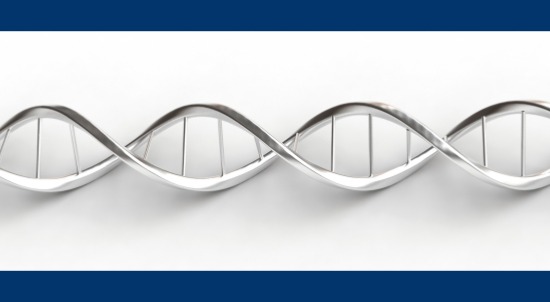
Description
Human structure is important to all of us as it has been for millennia. Artists, teachers, health care providers, scientists and most children try to understand the human form from stick figure drawings to electron microscopy. Learning the form of people is of great interest to us – physicians, nurses, physician assistants, emergency medical services personnel and many, many others.
Learning anatomy classically involved dissection of the deceased whether directly in the laboratory or from texts, drawings, photographs or videos. There are many wonderful resources for the study of anatomy. Developing an understanding of the human form requires significant work and a wide range of resources.
In this course, we have attempted to present succinct videos of human anatomy. Some will find these images to be disturbing and these images carry a need to respect the individual who decided to donate their remains to benefit our teaching and learning. All of the dissections depicted in the following videos are from individuals who gave their remains to be used in the advancement of medical education and research after death to the Yale School of Medicine.
The sequence of videos is divided into classic anatomic sections. Each video has a set of learning objectives and a brief quiz at the end. Following each section there is another quiz covering the entire section in order for you to test your knowledge.
We hope these videos will help you better understand the human form, make time that you may have in the laboratory more worthwhile if you have that opportunity and help you develop an appreciation of the wonderful intricacies of people.
Content Advisory: This course includes images of real human dissection for educational purposes. Some learners may find this material sensitive or disturbing.
📌 This course is one of four in the Yale Human Anatomy Specialization. The full series also includes: Anatomy of the Head and Spine; Anatomy of the Upper and Lower Extremities; and Visualizing the Living Body: Diagnostic Imaging.
Course Takeaways
- Teach you the language of medicine
- Learn how to reason in three dimensions. Put in a more simple way, learn how to see and feel what you cannot see
- Understand the structure, function, and relationship between: the chest wall, lungs, mediastinum & great vessels, heart, abdomen, mesenteric vessels, retroperitoneum, kidneys, duodenum, pancreas, neck, pelvis & perineum
Meet the Instructors
 Dr. Duncan graduated from Vanderbilt University in 1968 with a BA degree and received his medical degree from Duke University in 1972. He did his surgical internship from 1971-1972 at Duke and his neurosurgery residency, also at Duke, from 1972-1977. He joined the Yale faculty and the Yale-New Haven Hospital staff in 1977. He received his board certification in Neurosurgical Surgery in 1979. In 1978, he became Chief of Pediatric Neurosurgery at Yale and has progressed through the academic ranks at the university to become Professor of Neurosurgery and Pediatrics in 1994. He spent 1985-1986 in Special Studies at the School of Organization and Management Group. He has established the only dedicated pediatric neurosurgical unit in the state, published over 100 articles, and has been the principal investigator or co-investigator in twenty funded research projects. He was the co-principal investigator for the Indomethacin Projects to prevent intraventricular hemorrhage in preterm infants, which has been adopted in over 75 countries. He has served on the Credentials Committee, Operating Room Work Redesign Committee, By-Laws Review, Risk Management and other hospital committees. He is the program director for the Neurosurgery Residency Program. After running one marathon, Dr. Duncan decided he preferred fly-fishing.
Full biography
Dr. Duncan graduated from Vanderbilt University in 1968 with a BA degree and received his medical degree from Duke University in 1972. He did his surgical internship from 1971-1972 at Duke and his neurosurgery residency, also at Duke, from 1972-1977. He joined the Yale faculty and the Yale-New Haven Hospital staff in 1977. He received his board certification in Neurosurgical Surgery in 1979. In 1978, he became Chief of Pediatric Neurosurgery at Yale and has progressed through the academic ranks at the university to become Professor of Neurosurgery and Pediatrics in 1994. He spent 1985-1986 in Special Studies at the School of Organization and Management Group. He has established the only dedicated pediatric neurosurgical unit in the state, published over 100 articles, and has been the principal investigator or co-investigator in twenty funded research projects. He was the co-principal investigator for the Indomethacin Projects to prevent intraventricular hemorrhage in preterm infants, which has been adopted in over 75 countries. He has served on the Credentials Committee, Operating Room Work Redesign Committee, By-Laws Review, Risk Management and other hospital committees. He is the program director for the Neurosurgery Residency Program. After running one marathon, Dr. Duncan decided he preferred fly-fishing.
Full biography
 Dr. Stewart came to Yale in 1976 after earning a PhD in anatomy from Emory University. He began teaching anatomy in 1978. He teaches gross anatomy and neurobiology to medical, physician associate and nursing students, as well as paramedics. During that time he has taught more than 7,000 students. He is interested in both “hands on” learning in the lab as well as computer based learning. In his spare time, he follows football (Chelsea and Barcelona) and he cooks.
Full biography
Dr. Stewart came to Yale in 1976 after earning a PhD in anatomy from Emory University. He began teaching anatomy in 1978. He teaches gross anatomy and neurobiology to medical, physician associate and nursing students, as well as paramedics. During that time he has taught more than 7,000 students. He is interested in both “hands on” learning in the lab as well as computer based learning. In his spare time, he follows football (Chelsea and Barcelona) and he cooks.
Full biography
 Shanta E. Kapadia joined the faculty of the Section of Anatomy at the Yale University School of Medicine in 1975. She completed her medical education at the Christian Medical College, Vellore; one of the foremost medical schools in India. She obtained her M.B.B.S. degree, the equivalent of the M.D. in the U.S. In her early years at medical school she developed a love of anatomy and of teaching. Thereafter, she did graduate training and was awarded the degree of Master of Surgery, Anatomy. At Yale she has taught gross anatomy and microscopic anatomy to thousands of Medical Students for the past 43 years and to Physician Associate Students ever since the inception of the Physician Associate Program at Yale. Dr. Kapadia is one the most decorated teachers at Yale having won every teaching and mentorship award presented at commencement for both Medical and Physician Assistant students. Dr. Kapadia spends her spare time in the garden and playing with her grandchildren.
Full biography
Shanta E. Kapadia joined the faculty of the Section of Anatomy at the Yale University School of Medicine in 1975. She completed her medical education at the Christian Medical College, Vellore; one of the foremost medical schools in India. She obtained her M.B.B.S. degree, the equivalent of the M.D. in the U.S. In her early years at medical school she developed a love of anatomy and of teaching. Thereafter, she did graduate training and was awarded the degree of Master of Surgery, Anatomy. At Yale she has taught gross anatomy and microscopic anatomy to thousands of Medical Students for the past 43 years and to Physician Associate Students ever since the inception of the Physician Associate Program at Yale. Dr. Kapadia is one the most decorated teachers at Yale having won every teaching and mentorship award presented at commencement for both Medical and Physician Assistant students. Dr. Kapadia spends her spare time in the garden and playing with her grandchildren.
Full biography



